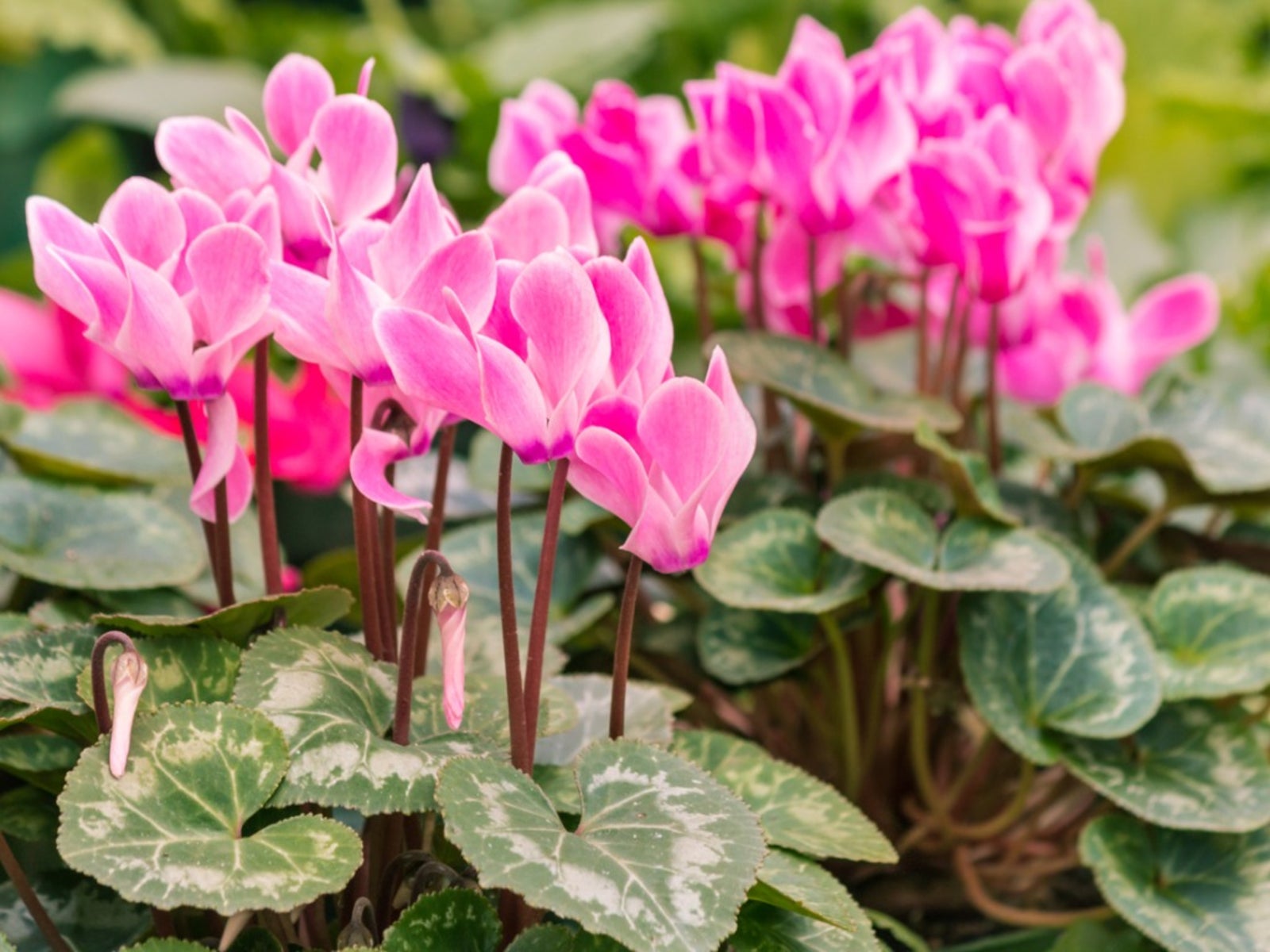
Source www.gardeningknowhow.com
Welcome to our comprehensive guide on cyclamen plant care. If you’re looking to add a touch of elegance and beauty to your indoor space, cyclamen plants are an excellent choice. Known for their vibrant flowers and attractive foliage, these plants are relatively easy to care for, making them perfect for both beginner and experienced gardeners. In this article, we’ll provide you with all the information you need to keep your cyclamen plant healthy and thriving. From watering and light requirements to fertilizing tips and common issues to watch out for – we’ve got you covered. So let’s dive in and discover the secrets to successful cyclamen plant care.
1. Proper Lighting for Cyclamen Plants
Choosing the Ideal Location
When it comes to lighting, cyclamen plants prefer bright, indirect light. Place your cyclamen near a north or east-facing window where it can receive bright but filtered light throughout the day. Avoid exposing your plant to direct sunlight, which can scorch its delicate leaves. If natural light is limited, you can also use fluorescent lights or grow lights to supplement the lighting requirements.
Managing Light Intensity
While cyclamen plants thrive in bright light, they can also tolerate lower light conditions. If you notice that your plant is not blooming or the leaves are becoming pale and weak, it could be a sign of insufficient light. In such cases, gradually increase the light intensity, but avoid sudden changes that can shock the plant.
2. Watering and Humidity Needs
Watering Frequency
One of the key aspects of cyclamen plant care is proper watering. These plants have specific watering needs that ensure they receive adequate moisture without becoming waterlogged. Overwatering is a common cause of root rot and other issues in cyclamen plants. Allow the top inch of the soil to dry out slightly between waterings, and then water thoroughly, letting the excess water drain out of the pot. Avoid leaving the plant in standing water, as it can lead to root decay.
Humidity Requirements
Cyclamen plants appreciate higher humidity levels, especially during the winter months when the air tends to be dry. You can increase humidity around the plant by placing a tray filled with water and pebbles near the pot. As the water evaporates, it will create a humid microclimate around the plant. Alternatively, you can use a room humidifier to maintain optimal humidity levels.
3. Temperature and Air Circulation
Preferred Temperature Range
Cyclamen plants thrive in cooler temperatures, preferring a temperature range of 55°F to 65°F (13°C to 18°C). Avoid exposing the plant to temperatures above 68°F (20°C) for extended periods, as it can cause the plant to wilt and decline. Keep your cyclamen away from drafts, such as open windows or air vents, as sudden temperature fluctuations can be harmful.
The Importance of Air Circulation
Good air circulation is essential for the overall health and well-being of cyclamen plants. Stagnant air can create a breeding ground for pests and diseases, so it’s crucial to provide adequate ventilation. You can achieve this by opening windows periodically or using a small fan to promote air movement. However, make sure the plant is not placed directly in the path of cold drafts.
Table: Cyclamen Plant Care Breakdown
| Aspect | Description |
|---|---|
| Lighting | Bright, indirect light; avoid direct sunlight |
| Watering | Allow top inch of soil to dry between waterings |
| Humidity | Higher humidity levels, especially in winter |
| Temperature | 55°F to 65°F (13°C to 18°C) preferred |
| Air Circulation | Avoid stagnant air; provide ventilation |
FAQ: Frequently Asked Questions About Cyclamen Plant Care
Q: How often should I fertilize my cyclamen plant?
A: It’s best to fertilize cyclamen plants every four to six weeks during their active growth phase. Choose a balanced, water-soluble fertilizer and dilute it according to the package instructions. Fertilize the plant after watering to prevent burn and promote healthy growth.
Q: Why are the leaves turning yellow?
A: Yellowing leaves in cyclamen plants can be a sign of various issues. Overwatering, underwatering, or exposure to extreme temperatures can cause yellowing foliage. Check the soil moisture levels and adjust your watering routine accordingly. Ensure that the plant is not receiving direct sunlight or being exposed to cold drafts.
Q: Can I propagate cyclamen plants?
A: Yes, cyclamen plants can be propagated through seed or division. Seeds require specific conditions to germinate, such as cold stratification. Dividing the tubers is a more straightforward method and can be done during repotting. Ensure that each division has a healthy portion of tuber and roots.
Q: How long do cyclamen flowers typically last?
A: Cyclamen flowers can last anywhere from a few weeks to several months, depending on the cultivar, environmental conditions, and plant care. Regular deadheading, removing faded flowers, can help prolong the blooming period.
Q: Are cyclamen plants toxic to pets?
A: Unfortunately, cyclamen plants are toxic to pets, including dogs and cats. The tubers, leaves, and flowers contain compounds that can cause digestive issues and other health problems if ingested. It’s best to keep cyclamen plants out of reach of curious pets or opt for non-toxic houseplants.
Conclusion
By following the essential care guidelines outlined in this article, you’ll be well-equipped to maintain a healthy and thriving cyclamen plant. Remember to provide your plant with the right amount of light, water it appropriately, and maintain the ideal temperature and humidity levels. Regular monitoring and proper care will ensure that your cyclamen plant rewards you with beautiful blooms and lush foliage year after year. Embrace the charm of cyclamen plants and enjoy the calming presence they bring to your indoor space.